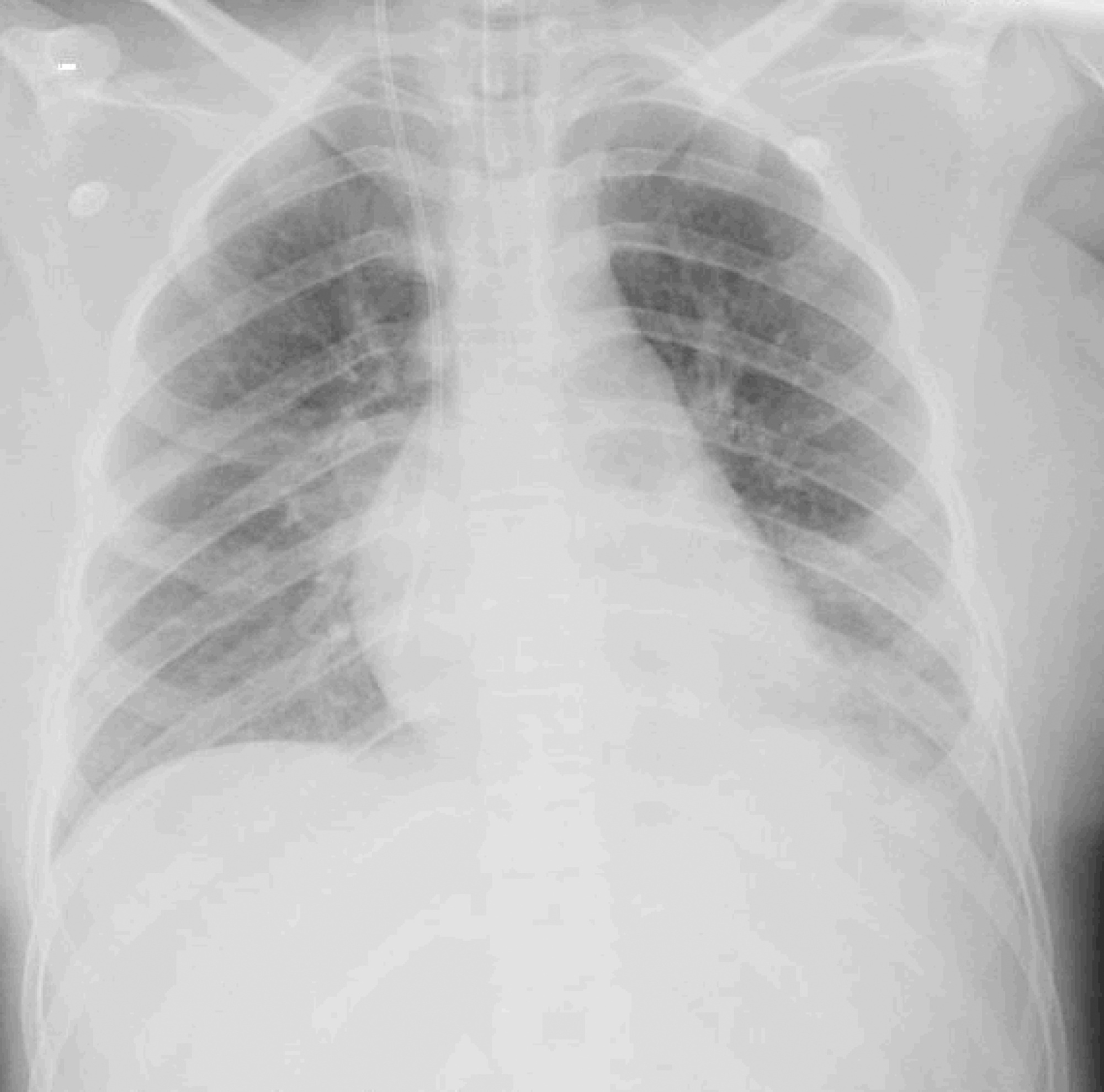Abstract
Rev Bras Ter Intensiva. 2021;33(2):320-324
DOI 10.5935/0103-507X.20210041
We report a case of Influenza B infection and Kawasaki disease in an adolescent, diagnosed during the COVID-19 pandemic. An asthmatic female adolescent presented with fever and flu-like symptoms for 7 days and was admitted with acute respiratory failure requiring mechanical ventilation. She progressed with hemodynamic instability responsive to vasoactive drugs. Antibiotic therapy and support measures were introduced, showing progressive hemodynamics and respiratory improvement, however with persistent fever and increased inflammatory markers. During the hospitalization, she developed bilateral non-purulent conjunctivitis, hand and feet desquamation, strawberry tongue, and cervical adenopathy, and was diagnosed with Kawasaki disease. She was prescribed intravenous immunoglobulin and, due to the refractory clinical conditions, corticosteroid therapy was added; 24 hours later, the patient was afebrile. No coronary changes were found. A full viral panel including COVID-19 C-reactive protein and serology could only isolate the Influenza B virus. During the hospitalization, she was diagnosed with pulmonary thromboembolism; coagulopathies were investigated, and she was diagnosed with heterozygous factor V Leiden mutation. There is a potential association between Kawasaki disease and infection with Influenza B or with other viruses such as coronavirus. Therefore, this association should be considered in pediatric patients, adolescents included, with prolonged febrile conditions.

Abstract
Rev Bras Ter Intensiva. 2015;27(3):240-246
DOI 10.5935/0103-507X.20150044
To determine the etiology and clinical disease progression variables of sepsis associated with the prognosis of patients admitted to a pediatric intensive care unit.
Prospective and retrospective case series. Data were collected from the medical records of patients diagnosed with sepsis who were admitted to the pediatric intensive care unit of a general hospital from January 2011 to December 2013. Bacteria were identified in blood and fluid cultures. Age, sex, vaccination schedule, comorbidities, prior antibiotic use, clinical data on admission, and complications during disease progression were compared in the survival and death groups at a 5% significance level.
A total of 115 patients, with a mean age of 30.5 months, were included in the study. Bacterial etiology was identified in 40 patients. Altered peripheral perfusion on admission and diagnosis of severe sepsis were associated with complications. A greater number of complications occurred in the group of patients older than 36 months (p = 0.003; odds ratio = 4.94). The presence of complications during hospitalization was associated with death (odds ratio = 27.7). The main etiological agents were Gram-negative bacteria (15/40), Staphylococcus aureus (11/40) and Neisseria meningitidis (5/40).
Gram-negative bacteria and Staphylococcus aureus predominated in the etiology of sepsis among children and adolescents admitted to an intensive care unit. The severity of sepsis and the presence of altered peripheral perfusion on admission were associated with complications. Moreover, the presence of complications was a factor associated with death.
Abstract
Rev Bras Ter Intensiva. 2007;19(1):98-106
DOI 10.1590/S0103-507X2007000100013
BACKGROUND AND OBJECTIVES: Present a critical review of traumatic brain injury (TBI) in children and adolescents, focusing on severe TBI, the mortality and the factors related with poor outcome. CONTENTS: It was made a systematic review in MEDLINE, SciElo e Lilacs, with the key words: traumatic brain injury, craniocerebral trauma, children and mortality. The most important articles related in the Guidelines of Brain Trauma Foundation (2000 e 2003) were selected too. TBI is one of the most important causes of mortality and morbidity in children and adolescents, and morbidity in children and adolescents. The mortality variation was between 10% and 55%, depending of the patients select criteria, trauma severity and units where the studies were made. The children mortality was, in general, lower than that found in adults and the most important factors related with an increased mortality were: Glasgow Coma Score, hypotension, cerebral swelling and lower cerebral perfusion press. Severe TBI endpoint treatment is to correct the secondary brain lesions related factors. CONCLUSIONS: The factors related with better outcomes in children with severe TBI are still obscures, despite the large number of studies, large numbers of studies. Many of these factors can be avoided or correct by aggressive fluid resuscitation, surgery treatment, monitoration and adequate intensive care.